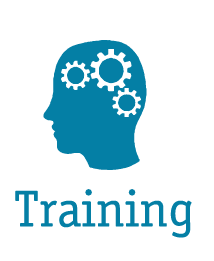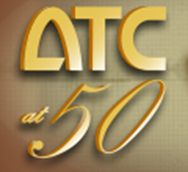NEWS BULLETIN
Applied Technology Council, A Non Profit Corporation Serving the Structural Engineering Profession
Vol. 4 No. 1 APRIL 1995
Redwood City, Calif., April 29, 1995. The Applied Technology Council (ATC), Structural Engineers Association of California (SEAOC) and American Society of Civil Engineers (ASCE), in cooperation with the Japan Structural Consultants Association (JSCA) and several other organizations, have announced plans to prepare a report on case studies of buildings and other structures damaged by the January 17, 1995 earthquake in Kobe, Japan.
Roland Sharpe, editor of the report and leader of the bi-lateral U. S.-Japan reconnaissance team that surveyed structures in Kobe shortly after the earthquake, announced the publication plans in Redwood City earlier this week. Sharpe indicated that the report “will archive critically needed information on the performance of buildings and transportation, port, and industrial structures. It should assist design professionals in both countries to understand the reasons for the extensive structural damage. Why, for example, did an intermediate-level story collapse in approximately 110 mid-rise frame buildings?”
“The reconnaissance effort was made possible through the generosity and invaluable assistance of JSCA members and the Building Research Institute, Ministry of Construction,” said Sharpe, who has chaired a series of six bilateral U.S.-Japan Workshops on the Improvement of Structural Design and Construction Practices conducted biannually by ATC and JSCA since 1984. “JSCA representatives arranged housing and transportation, provided structural engineers to guide the team members through the damaged areas, arranged access to damaged structures, and provided important information on structural characteristics, including plans of some damaged structures. We are forever grateful.”
The Kobe earthquake report will focus on issues directly affecting seismic design practices in both countries. It will provide:
• an overview of past and current Japanese design practices,
• descriptions of the design and construction characteristics of buildings and transportation, port, and industrial structures in the Kobe region,
• discussions of performance trends as a function of structure type and design code,
• case studies of approximately 50 structures, and
• a summary of findings and conclusions.
Information to be provided in the report was gathered by a team of 27 structural engineering practitioners and researchers representing ATC, SEAOC, JSCA, ASCE, the Council of American Structural Engineers, and the Earthquake Engineering Research Center at the University of California at Berkeley.
The report will be made available through ATC and SEAOC. Publication is expected in the summer of 1995.
ATC Releases Additional Information on Narrow Plywood Wall Tests (see page 2).
Reports of the ATC/SEAOC test of narrow plywood shear wall panels, as described in the prior ATC News Bulletin, have reportedly caused some engineers to question the adequacy or reliability of hold-down devices manufactured by the Simpson Company.
While Simpson HD-5A hold-downs were used as a part of the test panel assembly, the use of some other manufacturer's product or some other type of generally available hold-down device would not have had any significant effect on reducing the lateral deflection the panels experienced. The larger than generally anticipated deflections reported were the result of the entire system distortion. The problem with the system is that the large height to width ratio results in any movement in the hold-down or its attachment to the panel, to be magnified by a factor of four or more depending on the geometry of the panel and placement of the hold-down.
The test was intended to be of the narrow panel assembly as generally found in typical wood frame construction. Additional deflections due to shrinkage, overdrilling of holes, gaps in framing, overdriven or misinstalled nails, would further in•crease the anticipated deflections. If the large anticipated movements can not be tolerated, the solution would be to reduce the height-to-width ratio or to utilize an entirely different framing sys•tem, such as a masonry or concrete shear wall or a steel frame.
John Coil, ATC Past President
LAWRENCE REAVELEY BECOMES FIRST ATC SUSTAINING SUBSCRIBER
At its February 1994 meeting, the ATC Board of Directors established a new Sustaining Subscriber Program, whereby individuals who donate $2,000 or more to the ATC H. J. Degenkolb Endowment Fund become subscribers for life and receive complementary ATC reports. Individuals donating $2,000 (gold level) receive one complimentary copy each of all future ATC reports. Individuals donating $3,000 (platinum level) receive one complimentary copy each of all past and all future ATC reports.
Lawrence D. Reaveley, Chairman of the Department of Civil Engineering at the University of Utah, has become ATC’s first Sustaining Subscriber (platinum level). Dr. Reaveley is a Past President of ATC and has participated in numerous ATC projects. He is currently Co-Project Director on the ATC-33 Project, Preparation of Guidelines for the Seismic Rehabilitation of Existing Buildings, which ATC is conducting for the Building Seismic Safety Council with funding from the Federal Emergency Management Agency. Dr. Reaveley is a resident of Salt Lake City, Utah.
ATC is very appreciative of this generous donation.
JOHN COIL ASSOCIATES MATCHES BURKETT & WONG ENGINEERS’ CHALLENGE TO DONATE $2,000 PER YEAR FOR FIVE YEARS TO ATC ENDOWMENT FUND
John Coil Associates, Santa Ana, California, has matched the long-standing challenge by Burkett & Wong Engineers, San Diego, to donate $2,000 per year for five years to the H. J. Degenkolb Endowment Fund. First-year donations were forwarded to ATC in late 1994 by John Coil, President, John Coil Associates, and Robert Burkett, Principal, Burkett & Wong Engineers.
John Coil is the current Past President of ATC. He has participated in several ATC projects, including the ATC-33 Seismic Rehabilitation Guidelines Project, where he serves as Chair of the Wood Team. John also headed ATC’s recent program to test narrow plywood wall panels
Bob Burkett is a past ATC Board member. He has participated in several ATC-15 U. S.-Japan Workshops on Improvement of Structural Design and Construction Practices.
ATC kindly thanks these firms for their very generous donations.
ATC Endowment Fund
The ATC Endowment Fund, named in honor of the late Henry Degenkolb, was established in 1988 to provide funding for research projects of interest to practicing structural engineers that could not be funded by other means. The funds may also be borrowed by ATC on an emergency basis to alleviate cash flow problems. The current Endowment Fund balance is $66,573.
ATC BOARD ELECTS NEW OFFICERS FOR 1995
At its December 1994 meeting in San Francisco, the ATC Board elected officers for 1995. Succeeding John Coil as Presi•dent is Mr. Edwin Huston, of the firm of Smith & Huston, Seattle, Washington. Mr. Huston was appointed to the ATC Board by the Western States Council of Structural Engineers Associations. He previously served ATC as Vice President and Secretary/Treasurer.
Mr. John Theiss, President of Theiss Engineers, St. Louis, Missouri, was elected as Vice President. Mr. Mark Saunders, of Rutherford & Chekene, San Francisco was elected Secretary/Treasurer.
Members retiring from the Board were Thomas Atkinson, practitioner from San Diego, and Arthur Ross, practitioner from Sacramento and Past President of the Structural Engineers Associa•tion of California (SEAOC). Both individuals served with dis•tinction during their terms on the ATC Board.
Incoming Directors are James Libby, practitioner from San Diego, and Ronald Nelson, practi•tioner from Los Angeles and SEAOC President.
1995 ATC Board of Directors
Edwin T. Huston, President
John C. Theiss, Vice President
C. Mark Saunders, Sec./Treas.
John Coil, Past President
Nicholas F. Forell, San Francisco
Douglas A. Foutch, Urbana, Ill.
James A. Hill, Los Angeles
James R. Libby, San Diego
Kenneth A. Luttrell, Sacramento
Bijan Mohraz, Dallas, Texas
Ronald Nelson, Los Angeles
Charles H. Thornton, New York
A PAST ATC PRESIDENT’S RETROSPECTIVE
I was honored to serve as the organization's President (in 1993) and found it was a rewarding and educational experience. Although I had been a board member for a number of years, I discovered that I knew little about the day to day activity of ATC.
This discovery was possible through my close proximity to the ATC office, and Chris Rojahn's willingness to spend time with me and answer unlimited questions. I came away from this with a better understanding of ATC's operations, its opportunities and its role in the engineering community, as well as with a deep respect for the capability of ATC's staff.
The year of my term of office (1993) was very busy. This was assured by a number of large ongoing projects, including ATC-33 (BSSC/FEMA funded project to prepare Guidelines for the Seismic Rehabilitation of Buildings); ATC-34 (NCEER funded project to Evaluate R Factors and Other Critical Code Issues); and ATC-35 (USGS funded project to Speed The Transfer of Engineering Seismology Research Results to Engineering Practice).
Of particular significance was the Narrow Wall Testing project. It was funded through the Henry Degenkolb Endowment Fund and demonstrated a successful cooperative effort between SEAOC and ATC.
The establishment of a strong and positive relationship between ATC and SEAOC was one of my highest priorities. To that end, I attended all SEAOC board meetings to keep both SEAOC and ATC aware of their respective activities. This should be continued. ATC has offered its support to SEAOC on its Vision 2000 project and should continue to do so. The success of the ATC 3-06 report, Tentative Provisions for the Development of Seismic Regulations for Buildings, demonstrates ATC's ability to provide resource documents for code development.
The Design Aid series has gradually made significant advances. The three main topics chosen by the Board and cur•rently under development are: Dynamic Analysis; Interstory Drift and Floor Vibrations. Continued monitoring and direction for this self-funded effort will be necessary in the coming months.
ATC's financial position is healthy and strong. To keep it that way is the task of all of us. As I said at the end of my term, the organization and its board must become more proactive. We must actively promote new research projects as done with the development and conduct of the Narrow Wall Testing project and the comprehensive wood frame testing program (currently in a planning stage).
Nick Forell, ATC President, 1993
ATC-35 NATIONAL SEISMIC HAZARD MAPPING WORKSHOP SCHEDULED FOR SUMMER, 1995
A Workshop on National Ground Motion Mapping has been scheduled for the summer of 1995 as part of the ongoing ATC-35 program, “Transfer of U. S. Geological Survey Research Results into Engineering Practice.” Co-sponsors are the Building Seismic Safety Council (BSSC), the National Center for Earthquake Engineering Research (NCEER), and the Structural Engineers Association of California (SEAOC). The Workshop will be open to the profession at large.
The objective of the Workshop is to provide input to the USGS for the structural engineering community and the geosciences/geotechnical engineering community on several key broad issues that affect USGS's preparation of the next generation of national ground motion maps.
Working Groups will be formed to address the following four issues:
• Parameters. What ground motion parameters should be mapped?
• Reference site conditions. What should be the reference site conditions for which the maps should be prepared?
• Risk Representation. Should maps be purely probabilistic or should they incorporate deterministic considerations?
• Modeling. How should uncertainty in seismic source characterization and ground motion attenuation be incorporated in the mapping process and results interpretation?
Working Groups will consist of 6 to 12 members. Within each Working Group, at least two members will be selected to prepare Advocacy papers on different positions for each of the issues. The Working Groups will discuss issues presented on the papers in one or two meetings and will subsequently present their conclusions and reasoning to the Workshop participants for consideration by the Workshop as a whole.
The Workshop and the activities of the Working Groups will also serve to initiate the ATC-35 Ground Motion Initiative, which is a project to provide a longer-term examination of ground motion needs for a new generation of seismic design regulations and seismic design practice.
For additional information, contact Patty Christofferson at ATC.
CALIFORNIA SEISMIC SAFETY COMMISSION ISSUES ATC-37 REPORT
The ATC-37 report, Review of Seismic Research Results on Existing Buildings, was completed in 1994 and is now available through the California Seismic Safety Commission.
The report reviews and synthesizes available research results related to the building types in the Proposition 122 California Seismic Retrofit Practices Improvement Program, approved by California voters in 1990.
The report summarizes key findings that may assist in the writing of seismic retrofit provisions and in the design of retrofit projects that are planned as part of the Proposition 122 Program. Also included in the report are summaries of 90 research projects on:
• Nonductile concrete frame structures;
• Nonductile concrete shear walls; and
• Frames infilled with Unreinforced Masonry The report was developed
jointly by ATC, California Universities for Research in Earthquake Engineering (CUREe), and members of the Structural Engi•neers Association of California (SEAOC), who advised and guided the project. Prof. Jack Moehle, University of California at Berkeley, served as principal author. Robert A. Bruce, ATC Technical Director, served as Principal Investigator. Joseph Nicoletti and Dawn Lehman served as research consultants, and Thalia Anagnos and John Meehan were technical advisors.
As a follow on to this project, ATC is now conducting the ATC-40 project, Development of a Recommended Methodology for the Seismic Evaluation and Retrofit of Existing Concrete Buildings.
ATC Executive Director Christopher Rojahn, ATC Newsletter Editor Patty Christofferson
Any comments or suggestions for the newsletter should be forwarded to the ATC office located at 555 Twin Dolphin Drive, Suite 550, Redwood City, California, 94065. Phone: 415/595-1542. Fax 415/593-2320.




